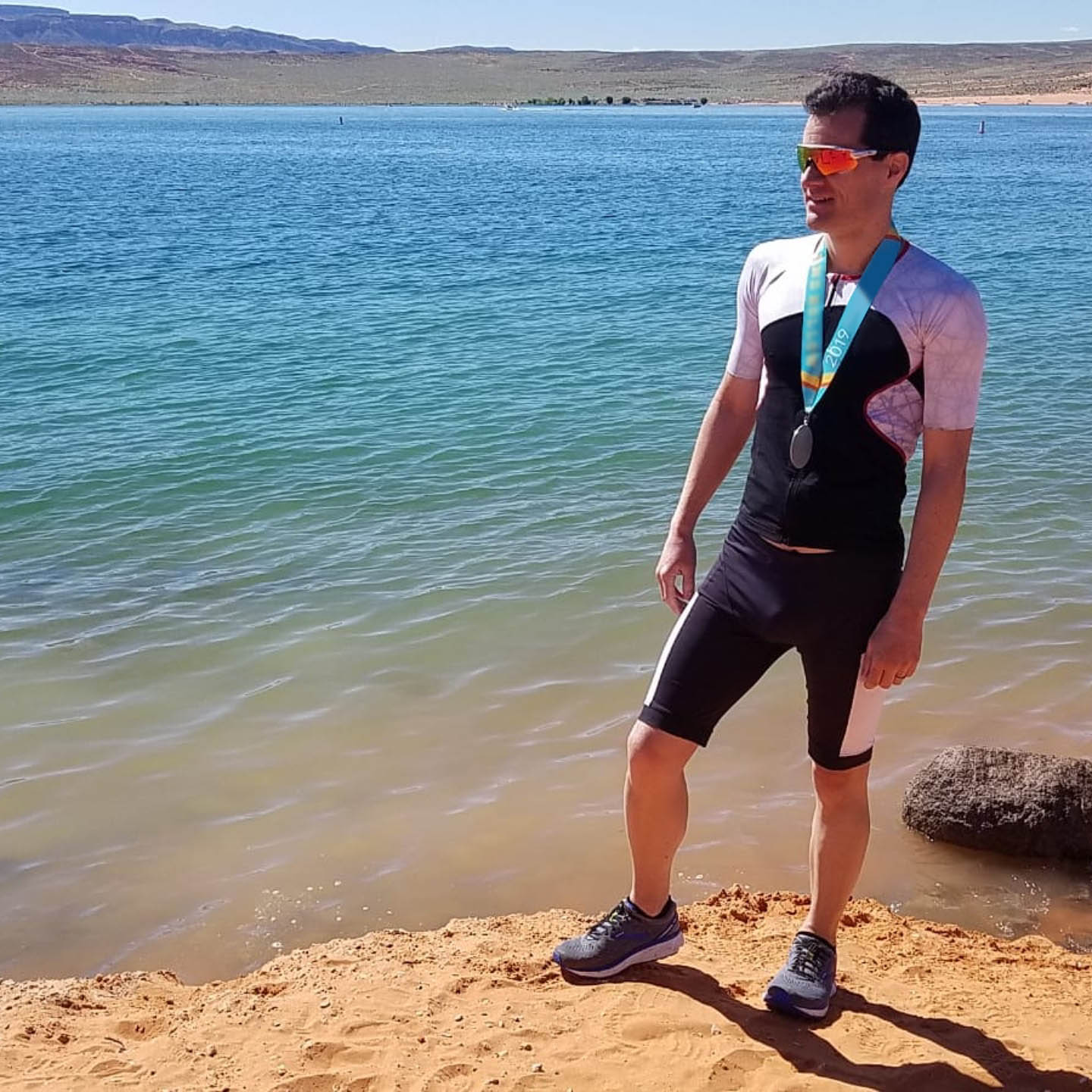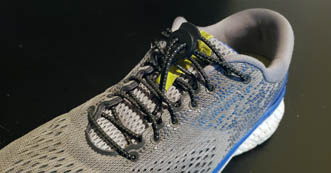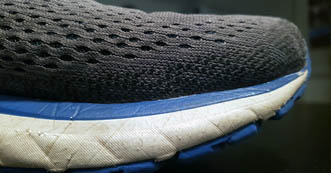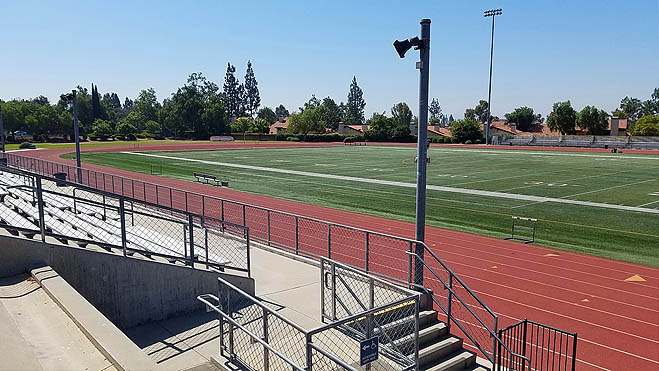RUN
TRAINING
RUN BETTER & FASTER
RUN START.
Running is the heart of triathlon.
The #1 thing to remember about running is that if you want to be faster, you need to go faster. I’ll explain. Many runners go out and run the same 2-3 miles every day at basically the same normal pace and consider that a good workout. Those types of workouts don’t push you or teach your muscles to build speed and power. They teach your body to stay the same. If you want to build speed and power you need to do just that. Put strain on your muscles. Increase your speed. Push yourself. See the workouts section for complete running workouts. Here we will focus on all things running.

RUN TECHNIQUE.
To be the best runner you can be, you need three things. Distance, Speed and Strength workouts.
HOW TO RUN FASTER
1) DISTANCE – Your distance workouts will build stamina and mental strength. Use these longer workouts to eventually build long fast runs.
2) SPEED – These will be shorter fast runs, faster than race pace. The main purpose of these is to teach your body to handle more strain so you can actually GO FASTER during any run.
3) STRENGTH – With strength workouts, you’ll be able to increase your muscle recovery faster which will enable you to handle more, longer and be able to exert more power when you run. Hills, push-ups, sit-ups/crunches, squats etc.
Note: Having said all this above, if you don’t push yourself hard, often, you really won’t see that much improvement. It’s all about pushing hard every day that will make the difference. Push through the pain.
Mental Power: It’s all in your head. Your mind is going to be the difference between you being average and you being really fast. You can take two people at the same level with the same workouts and the one who is willing to kill it every day will definitely have a significant advantage over the other person who just puts in the work. It’s all about pushing hard, really hard.
Running upgraded: The way you take your running to the next level is push yourself harder than you think you can go. The end. It’s all in your head.
- Form:
- Arms bent at 90 degrees with your hands swinging along your hip area for maximum energy efficiency
- You will notice hands will get higher the faster you run, that’s normal
- Sprinting – get up on your toes!
- You will notice the faster you go the more you will transition from landing each stride from your heel to up on your forefoot.
- If you do find yourself heel striking it’s probably because you’re running pretty slow. It’s ok! KEEP GRINDING! The slower you go, the more quad you will use which is where your strength workouts will benefit you.
- Stretch:
- Keep yourself stretched!
GEAR.
Let’s go over all the items that will make your running experience more successful and more enjoyable. Your main piece of gear will be of course your shoes. Get some good running shoes that offer proper support for your foot. Your race gear can be different than your training gear.
- Shoes: Get some running shoes.
- Elastic laces: Buy some elastic laces for your shoes. You’ll never need to tie a shoe lace again. This is extremely fast and convenient during the race and any time you’re putting on or taking off your shoes.
- Socks: Get some ankle socks for your race because when you get out of the water you’ll have a challenging time getting anything larger than an ankle sock on your feet. Bunch up the socks on the sides with your thumbs all the way inside the socks so you can slip it on quickly during the race. We’ll go more into this on the race day/transition pages.
Winter: Don’t let the cold weather stop you if you’re in a cold climate.
- Gloves
- Beanie
For the most part, all you really need for running is a good pair of shoes, and then get outside and rock it!
RUN AREAS.
When is comes to where you should run, you can really just about anywhere. This section will focus on tips on how to execute different areas of running for safety and best practices.
- City: If you live in the city you’ll need to find safe areas to train. Look for large parks, schools with a track, your gym will probably have a treadmill.
- Trails: Awesome for running. If you can find trails to run on, you’ll probably love it. Lots of variety, elevation changes, uneven terrain etc.
- Track: If there is a track nearby it’s always nice to get some good speed workouts in here. Find a college, high school or junior high with a track. There are a lot of benefits from running on a track. It’s safe, accurate, fast, flat, uninterrupted (usually) etc.
- Trees: If you run on a busy street with lots of overhanging trees, something to be aware of is there could be a lot of carbon monoxide buildup from vehicles. Just something to be aware of if you have the choice to train on a street like that or not regularly.
- Hills: You’ll want to incorporate hills into your run areas for that extra increased effort to build your muscles like a rock star. Probably the best reason to run hills is that you’ll probably encounter hills in your race. Be ready for it.
- Safety: When you have to run IN the street, of course run on the shoulder and run against the traffic so the cars are facing you. This will enable you to jump out of the way of an drifting vehicle. If you run with the traffic in the street you will have zero chance to avoid being hit! Otherwise, run on the sidewalk if there is one.
NUTRITION.
Running can be an intense full body workout. The harder you workout, the more important your nutrition is before, during and after your workouts. You can eat a full meal about 4 hours before a really hard workout.
Water: Learn to drink a lot of water. Drinking enough water will make THE difference in many areas of success. Hydrate yourself! You’ll know if you are plenty hydrated when your pee is clear. If your pee is yellow, drink throughout the day until you are hydrated. Always hydrate yourself before and after your workouts. Not enough water can leave you with tight muscles which could lead to injury and/or an overly exhausting experience.
During running: You generally won’t need to eat or drink anything during a run unless you didn’t drink enough before and you completely dehydrated yourself during the run. If you’ve been properly preparing yourself you won’t need any nutrition during a run. Anything longer than about 1hr 20min or so you’ll want to have some nutrients to consume.
STRETCH.
A decent rule of thumb is that the more serious you take your stretching before a run, the more serious you take the workout.
If you don’t warm up and go out hard, your muscles expand fast and get tight. Circulating blood flow by stretching and warming up will get your muscles ready for an intense workout.




